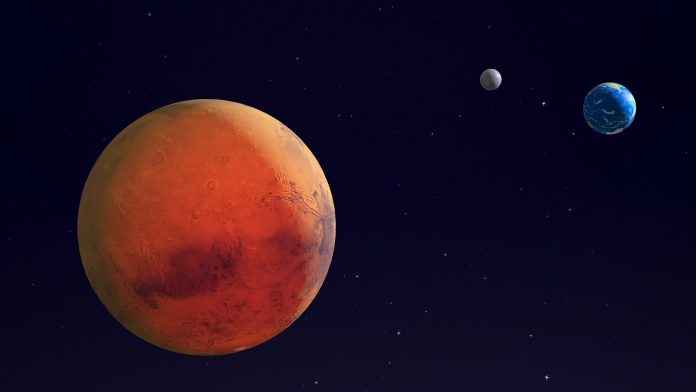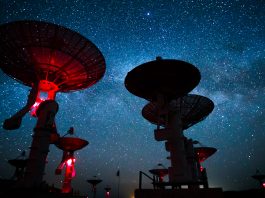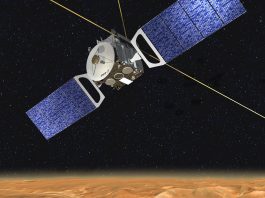Astronomers from the University of Hong Kong suggest that the oxidising atmosphere of Mars was created when microbes began to respire and produce oxygen.
Earth and Mars currently have oxidising atmospheres. The Earth has had an oxidising atmosphere for approximately two and a half billion years, but before that, the atmosphere of this planet was reducing – meaning there was no oxygen.
The transition from a reduced planet to an oxidised planet is referred to as the Great Oxidation Event. This transition was a central part of our planet’s evolution, and fundamentally linked to the evolution of life here – specifically to the prevalence of photosynthesis that produced oxygen. Planetary geologists at the University of Hong Kong have discovered that Mars underwent a great oxygenation event of its own billions of years ago. This event is what cause Mars to become red, as its iron-rich surface became oxidised.
The discovery was published recently in Nature Astronomy in a paper led by research postgraduate student Jiacheng Liu and his advisor Associate Professor Dr Joe Michalski, both affiliated with the Research Division for Earth and Planetary Science and Laboratory for Space Research.
Mars is cold and dry now, but ~3.5 billion years ago, it was warmer and wetter. It was warm enough to allow the formation of river channels, lakes, and minerals that formed by interaction with water. Scientists who have used mathematical models to constrain the conditions of an early Martian atmosphere, have concluded that greenhouse warming occurred, but they also concluded from their models that it must have included reduced gases rather than carbon dioxide, implying that a reducing atmosphere might have existed. Yet until now, there has not been any evidence that the reduced atmosphere of early Mars actually occurred. This work indicates that it did exist.
Combining remote sensing techniques and spectroscopy
The research team used infrared remote sensing and spectroscopy to measure the molecular vibration of the material on the Martian surface from orbit. Through detailed comparisons of infrared remote sensing data and data collected in the laboratory here on Earth, the team showed that ancient rocks on Mars exposed at the surface had been weathered under reducing conditions, indicating a reduced atmosphere did exist.
The work was built on detailed analysis of weathered volcanic rocks in Hainan Island in southwestern China, where thick sequences of basalt, similar to volcanic rocks on Mars occur. Jiacheng Liu analysed the altered rocks systematically using infrared spectroscopy in the laboratory and produced a paper on that research, which was published recently in Applied Clay Science.
Michalski commented: “Jiacheng has carried out a truly excellent PhD project, built on careful analysis in the laboratory and application of those laboratory results to remote sensing of Mars. Jiacheng has built on his detailed work on samples from Hainan Island to show that similar mineralogical trends occurred in rocks on Mars.”
The transition from a reducing to oxidising atmosphere on Earth ~2.5 billion years ago was only possible because the existence of life, as oxygen is a waste product of metabolic processes like photosynthesis. Without microbes producing oxygen, it would not accumulate in our atmosphere, and life could not exist.









